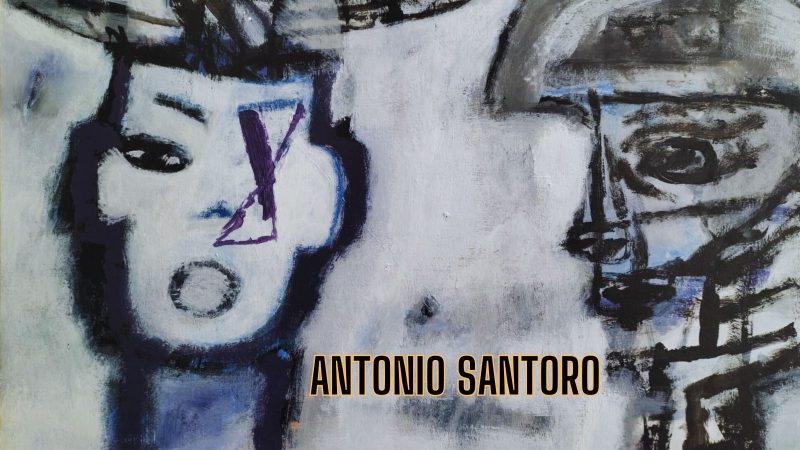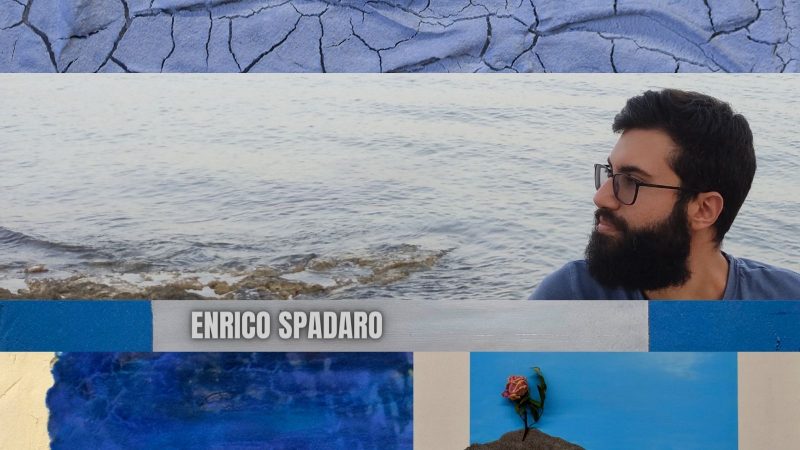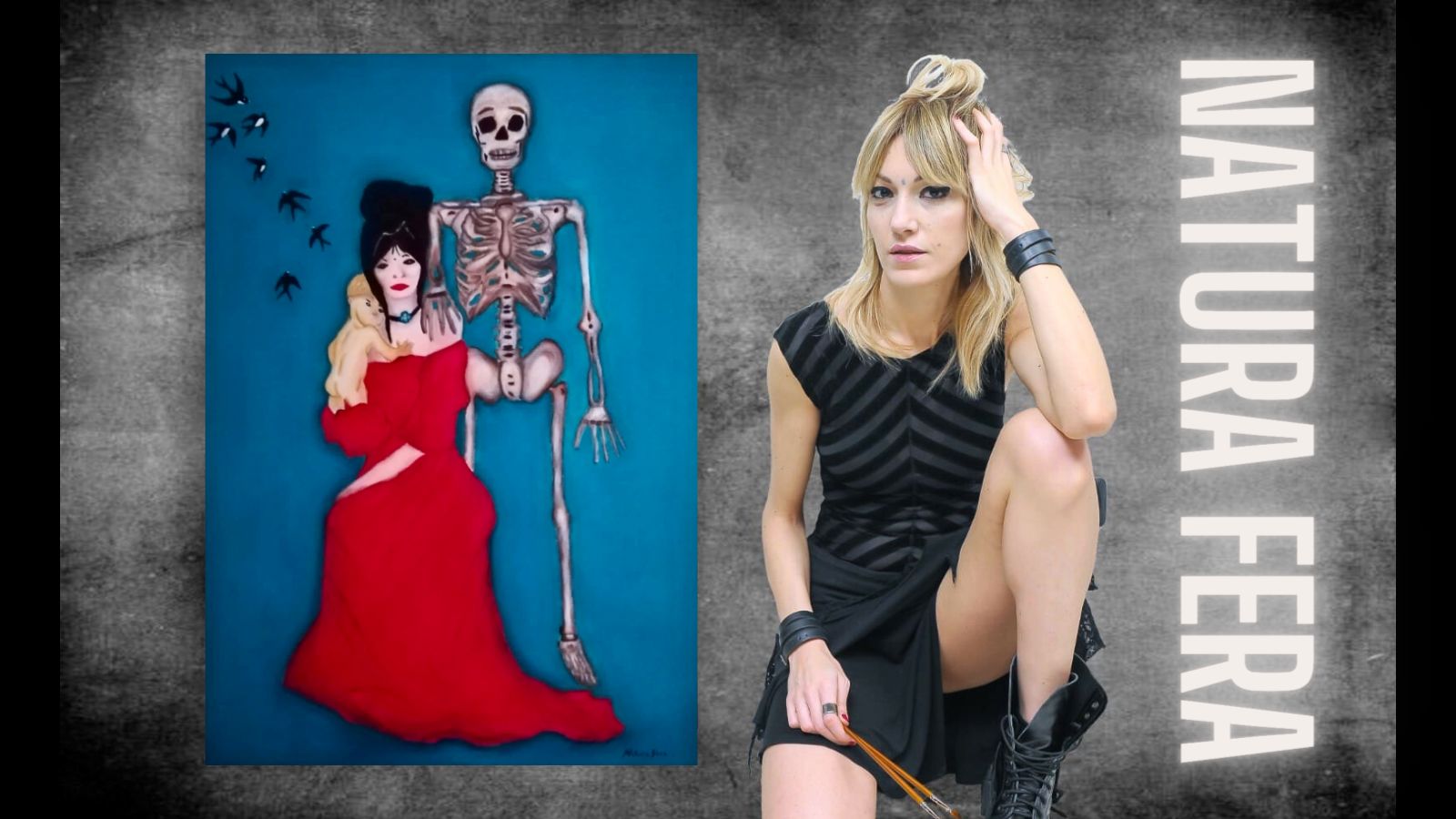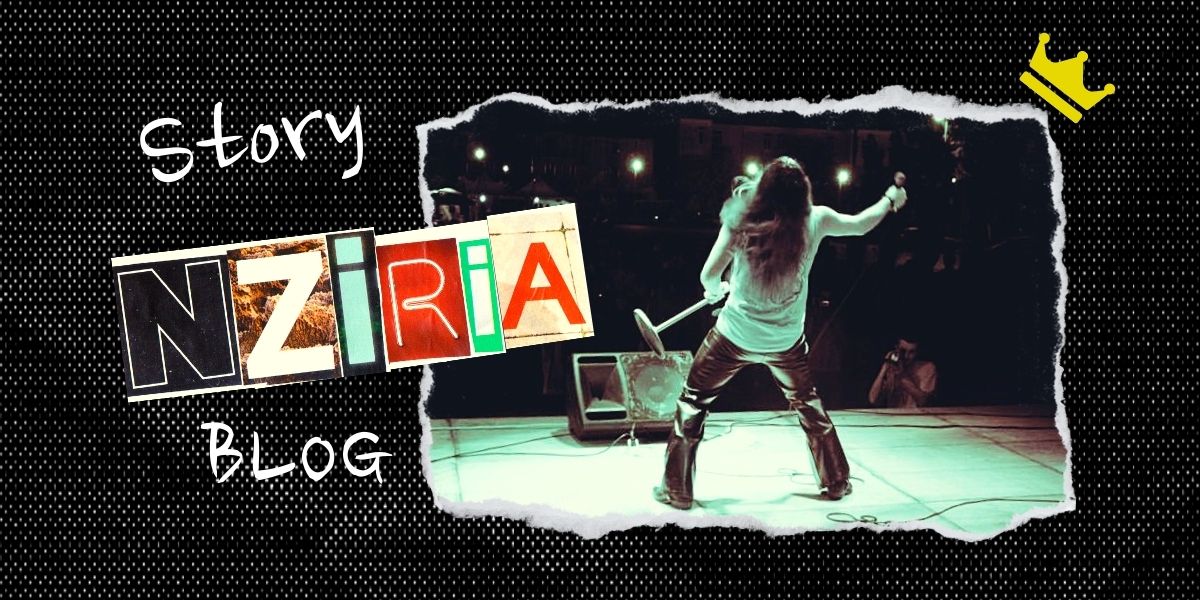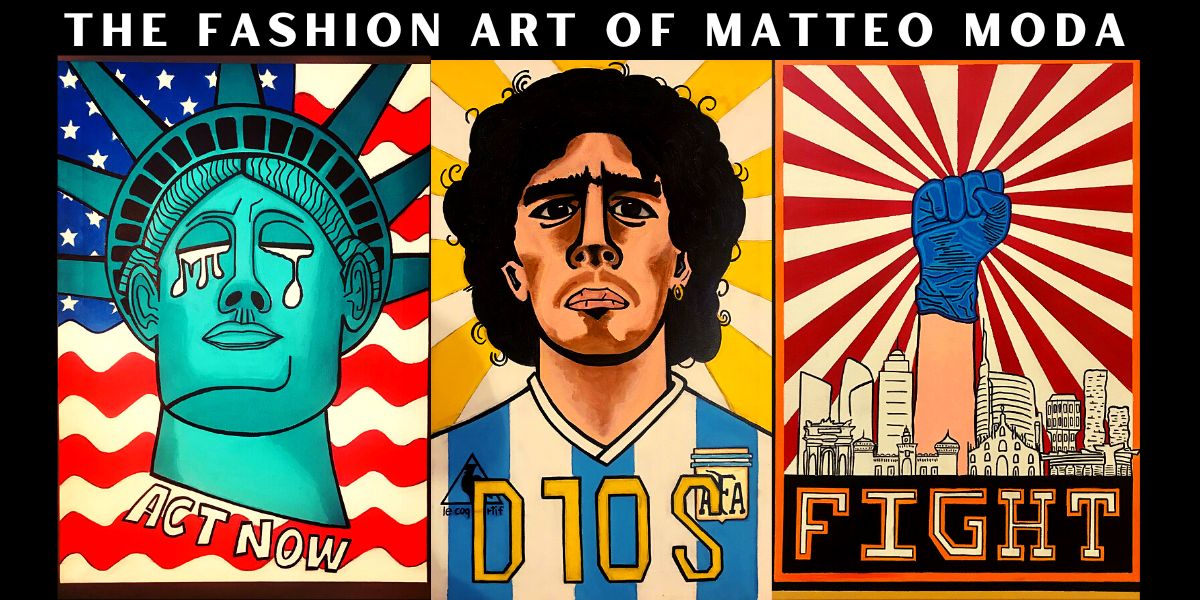Feels like Aria: the art of Annamaria Carelli
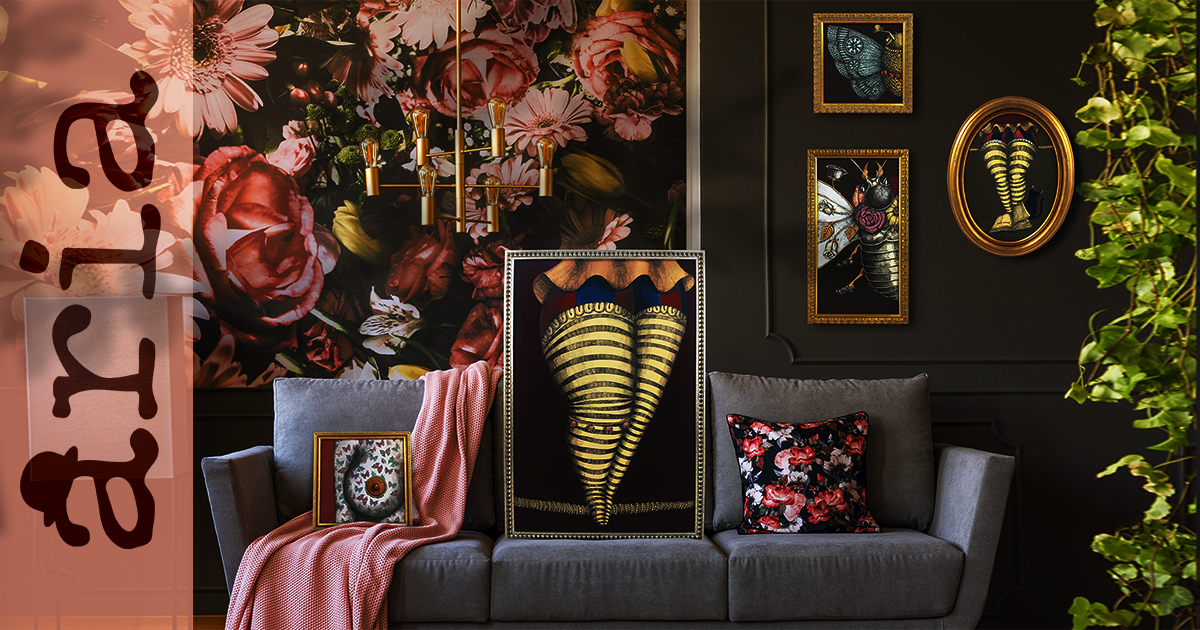
Aria is an Italian artist from Salerno, who moved to Milan for work. Her paintings are very captivating. They have all the power to take the spectator into a dreamlike dimension, full of elements that seem to come out of a fairy tale. She has two leitmotifs in her works: the striped stockings belonging to a woman and a cylinder belonging to a man. By interviewing her, we discovered what is behind these unusual characters, which are repeated in every single one of her works. We also asked her what are the secrets of her magical art. Finally, Aria will be one of the artists who will participate in the future 3rd Space box contest.
Aria (air in English, ed.) is a term that evokes lightness and a sense of impalpability just by saying it. Annamaria Carelli seems made of these elements and has chosen Aria as her artistic name. All the strength of her personality is poured into her paintings; at the same time, it is possible to see that healthy desire for lightness, which transports her visitors towards a universe to be discovered.
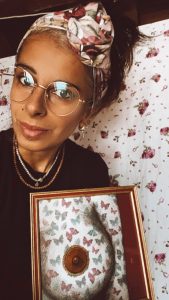 Aria first attended the Academy of Fine Arts in Naples. Then she moved to Milan in 2007, where she completed her studies at the Institute of Design. Finally, she worked for a media agency as a designer. In all these years, Aria has always idealised what design is, 3D design, and renderings. She considers all of this more ‘lofty’, a job that counts for more than painting, in terms of professional experience. But painting is such a vital part of Aria’s life, that she no longer wants to devote just a little time to it. So, in June 2019, she made the decision to focus full-time on her art. All her strength and perseverance could only be rewarded: Aria now exhibits her paintings at the Galleria Pisacane in Milan, in the Porta Venezia area, and sells them through her website.
Aria first attended the Academy of Fine Arts in Naples. Then she moved to Milan in 2007, where she completed her studies at the Institute of Design. Finally, she worked for a media agency as a designer. In all these years, Aria has always idealised what design is, 3D design, and renderings. She considers all of this more ‘lofty’, a job that counts for more than painting, in terms of professional experience. But painting is such a vital part of Aria’s life, that she no longer wants to devote just a little time to it. So, in June 2019, she made the decision to focus full-time on her art. All her strength and perseverance could only be rewarded: Aria now exhibits her paintings at the Galleria Pisacane in Milan, in the Porta Venezia area, and sells them through her website.
Very intimate, as well as very cute, is the way she relates to the individual buyer. She states: “I love the idea that anyone who chooses the painting, falling in love with it first, has the privilege of keeping it with them, giving it as a gift, like a letter sent, which the receiver can re-read every time they enter in a room”. But Aria’s art does not stop at images, it goes beyond them. In fact, she also manages to enchant her audience with delicate – yet impactful – poems, which are collected in the blog section under the name of #pensieriinaria. The most significant ones end up printed on pretty T-shirts.
It is easy to get curious about such a versatile artist. And this is why NZIRIA did not miss the opportunity to interview her.
First of all, who is Aria? If you could describe her with three adjectives, which would you choose?
Aria is Annamaria’s creative side, that little piece of me that needs to be told. I found this word in my name one day, as a surprise. Yet it had always been there, but I hadn’t noticed it before. To me, it was the perfect word to represent what is essential: painting. I would describe Aria with these three adjectives: twisted, poetic and creative.
I have read that music has a great influence on your drawings, just think of De Gregori’s famous song “La Donna Cannone”. How does music become a painting? Who are your favourite musicians?
I have sometimes thought that I paint to overcome the disappointment of not being able to make music. It’s an art form I love, because it creates such a synergy with words, my other great passion. It seems that music makes words sparkle. But as soon as I try to understand, it escapes me. So I am submissive to it, but in a good way. I enjoy music, I draw inspiration from it. And every time, I am astonished at how someone could have thought of it, created it and played it. Painting has far fewer secrets for me. In fact, while I can identify the colours of each brushstroke in a painting, or the design that may have been behind it, I have a mysterious friendship with music, so although I am familiar with it, it remains an enigmatic world for me.
When I love a song, while I’m listening to it, I imagine the drawing I would make corresponding to that verse, or the other. For example, ‘La donna Cannone’ is a character born one day when I had to make some illustrations for the animation of a video, and precisely on 40 seconds of De Gregori’s masterpiece. I captured on paper the figure I had always imagined, while that song was playing on the radio. From that day on, I have never stopped painting it.
I adored Ezio Bosso. His music makes me never miss the words. But I can’t list all my favourite musicians, it would be too many. Let’s just say that I prefer the great Italian songwriters, and all those musicians who enhance other people’s lyrics with their melodies.
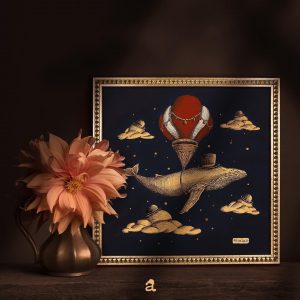 Literature also seems to be your greatest source of inspiration. In your blog, your ‘thoughts in the air’ are precious tidbits. Does reading/writing help you in the process of creating a work? Do you have a favourite author?
Literature also seems to be your greatest source of inspiration. In your blog, your ‘thoughts in the air’ are precious tidbits. Does reading/writing help you in the process of creating a work? Do you have a favourite author?
Yes, I have a favourite author: Erri De Luca. He creates such poetic images in words, which I hope one day to be able to recreate with paintings, equally full of poetic power. In his books I always underline the sentences that most movingly affect me and I handy keep them, in order to draw energy and suggestions. So, when I feel less inspired, I immediately pick out the highlighted words that are able to trigger a liberating creative flow in me. My #pensieriinaria, on the other hand, are like just small paintings for me, made only of words.
There are two elements that always distinguish your paintings. These are the striped stockings (and the body) of a woman and a man with a hat. What do they symbolise for you? And how are they renewed in each painting?
I consider the striped stockings to be the symbol of a circus: the circus of appearances, of laughter that can hurt, from those who believe they are authorised to do so in public. A recurring and miserable attitude, which occurs in the street, on the metro, at school, in a waiting room, as soon as someone spots ‘the different’. By repeating this character almost obsessively, I want to stimulate a thousand other feelings and reactions in the observer, far from laughter. I want people to recognise beauty, elegance, sensuality, refinement and politeness in those who do not reflect the canons promoted by the contemporary world.
On the other hand, the man with the hat is music, art and poetry. He is shy and silent, but fascinating. I have also written a story about him on my blog, entitled The man in the hat who almost doesn’t exist. And when I say “almost”, I mean that he is indeed a character born of my pen, but I do not guarantee that he is imaginary. I have come to condense him, over the years, into the single element of the hat.
The hat often appears on the fingers of a living hand, on the head of a whale floating among the stars, on a beetle, on a swallow indeed. So wherever there is a special being. And every time I paint these two characters I’m afraid that it will be the last time, because it seems to me that they have said it all. I’m always afraid that I won’t come up with a new idea to represent them. But they’ve been appearing in my hands for years and escaping onto the paper, eventually. Thank goodness!
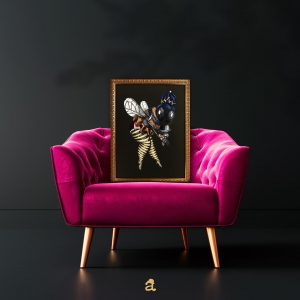 During the quarantine period, many have rediscovered their hidden creativity through painting, music and writing. How did you experience this unusual period? Did it have a positive or negative influence on your art?
During the quarantine period, many have rediscovered their hidden creativity through painting, music and writing. How did you experience this unusual period? Did it have a positive or negative influence on your art?
Once this period has been over, I hope that we do not forget to nurture our rediscovered passions. They are an antidote to the hidden boredom of ‘normal’ life with its routine, office and shopping. Creating something with our own hands can be more satisfying than buying the umpteenth pair of shoes, for example. Activities such as writing, playing music, repainting an old chair, taking photos and then printing and framing them, can help us to discover that sometimes we can create the objects we so desperately seek and in which we can see ourselves. And that exercise, research and perseverance, based on a true passion, can bring us a lot of great satisfaction.
Obviously, I have been painting more than ever, locked up at home. My friends jokingly say that I have actually been in voluntary quarantine since 1998. This joke stems from the fact that I often don’t go out for days on end if I am working on a painting. I like to stay in the studio, neglecting my friends a bit. All the more so this year, painting has been the best company I could wish for in quarantine. I have had confirmation that art always saves me, constantly offering me excellent reasons to get through the day. So that’s why I have decided, since June last year, to devote all my time to it, and no longer just the odd moments.
Chiara Grasso_ NZIRIA team home


